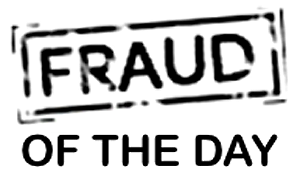In mid-2025, Illinois investigators uncovered a wide-reaching procurement fraud operation that siphoned millions of taxpayer dollars away from vital public projects. The case, which has already led to multiple indictments, demonstrates how fraud does not always come from outside government systems—it can also thrive within them, fueled by insider knowledge and access.
The scheme revolved around the creation of “ghost vendors.” These were shell companies that appeared legitimate on paper, complete with fabricated tax identification numbers, mailing addresses, and even mocked-up websites. The companies submitted bids for technology upgrades, construction projects, and maintenance contracts with a regional state agency. Because the vendors looked authentic and offered competitive prices, they were awarded contracts. But in reality, no goods or services were ever delivered.
Instead, payments were funneled through layers of accounts controlled by a small circle of insiders, including at least one procurement officer. Over a three-year span, investigators believe the network extracted more than $12 million from budgets earmarked for infrastructure modernization. Projects ranging from courthouse repairs to IT system upgrades were stalled or abandoned altogether because funds had been diverted.
The fraud unraveled when auditors detected a series of irregularities: multiple vendors with nearly identical invoice language, payments routed to the same bank branch, and bid documents containing recycled language across supposedly unrelated companies. What began as a small red flag soon revealed itself to be a web of deceit spanning dozens of contracts.
“It was a house of cards built on insider access,” said Illinois Inspector General Susan Haling. “Those responsible weren’t exploiting a loophole—they were manufacturing the system itself to serve their own greed.”
The scandal has had far-reaching consequences. Beyond the immediate financial losses, the fraud eroded confidence in Illinois’ contracting process. Honest businesses that played by the rules found themselves losing bids to companies that didn’t even exist. Meanwhile, taxpayers were left footing the bill for services that never materialized, while critical public projects languished in bureaucratic limbo.
In response, the state has announced sweeping reforms aimed at tightening vendor verification. Among the new safeguards are mandatory in-person verification for first-time vendors, enhanced cross-checking against federal and state business registries, and increased use of data analytics to flag suspicious patterns in bids and payments. Training for procurement officers is also being expanded, emphasizing the need to question “perfect-looking” applications.
The case underscores a troubling reality: fraudsters often exploit not just gaps in technology, but also the very trust that underpins government processes. When insiders manipulate the system, detection becomes far more difficult—and the damage to public confidence even greater.
This scandal serves as a reminder that robust oversight is not a one-time fix but an ongoing responsibility. Fraudsters adapt, and prevention must adapt with them.
Today’s Fraud of the Day draws on coverage from the Chicago Tribune and Illinois Office of the Executive Inspector General reports detailing procurement fraud charges in 2025.




